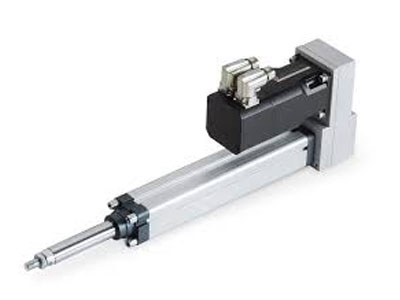Key Takeaway
Rotary actuators offer several advantages, including precise control, compact design, and high torque output. These features make them ideal for applications requiring rotational movement and space efficiency.
Understanding these advantages can help you choose the right actuator for your needs, ensuring efficient and reliable operation. Consider factors such as torque, speed, and environment when selecting a rotary actuator.
Compact Design for Tight Spaces
Rotary actuators offer significant advantages in compact design, making them ideal for applications in tight spaces. One key benefit is their ability to generate powerful rotational motion while maintaining a small, space-efficient footprint. Unlike linear actuators, which require more room for extended movement, rotary actuators can provide precise rotational control in confined areas, making them perfect for applications where space is at a premium.
Another advantage is their versatility. Rotary actuators can be easily integrated into machines or devices that need rotational motion but lack sufficient space for bulky equipment. This includes small robotics, automated machinery, and systems requiring precise control of valves or levers. Their compact size doesn’t compromise their torque output, allowing them to perform heavy-duty tasks without taking up much room.
Lastly, the reduced size of rotary actuators helps minimize the overall weight of the system, which is particularly beneficial in applications like aerospace, automotive, or portable equipment. In these industries, maintaining a lightweight design is critical for performance and energy efficiency. By using rotary actuators, engineers can maximize functionality while keeping the design streamlined and efficient, making them essential for tight-space applications.

High Torque Output
Another key advantage of rotary actuators is their ability to produce a high torque output. Torque is a measure of the rotational force generated by the actuator, and in many industrial applications, high torque is essential for performing heavy-duty tasks. Rotary actuators are designed to provide a substantial amount of torque relative to their size, making them suitable for applications that require significant rotational force.
For example, in robotics and automated machinery, high torque is required to perform actions such as turning gears, rotating parts, or opening valves. The ability of rotary actuators to generate powerful rotational force allows for more efficient operation of complex systems. Additionally, hydraulic rotary actuators offer even higher torque output, making them ideal for heavy-duty applications where high levels of force are needed. This makes them especially valuable in industries such as oil and gas, automotive manufacturing, and construction, where powerful rotational movement is required for tasks like drilling, lifting, or material handling.
Precise Control of Motion
Rotary actuators are renowned for providing precise control of motion, a crucial feature in applications that demand accuracy and reliability. These actuators allow for smooth, controlled rotation that can be finely adjusted to meet specific needs, making them ideal for tasks that require high precision, such as positioning systems, valve control, and robotics.
The precise control offered by rotary actuators ensures that the system operates smoothly, preventing errors and increasing productivity. Whether it’s adjusting the position of a robotic arm or regulating the flow of a fluid in a pipeline, the actuator’s ability to provide accurate and repeatable motion is vital to the performance and quality of the system. This precision is achieved through various control mechanisms, including gearing, servo motors, and feedback systems, allowing operators to make small adjustments with a high degree of accuracy. As a result, rotary actuators are often used in automation and precision manufacturing, where even slight inaccuracies can lead to costly defects or inefficiencies.
Versatility Across Industries
The versatility of rotary actuators is one of their standout advantages, as they can be used across a variety of industries and applications. These actuators are adaptable to different power sources, including pneumatic, electric, and hydraulic, allowing them to be implemented in a wide range of systems, from simple machines to highly complex industrial processes.
In the automotive industry, rotary actuators are used in applications such as steering mechanisms, valve control systems, and mechanical actuators in automated manufacturing lines. In robotics, they are essential for providing the rotational movement required for precise manipulation of components. Aerospace and defense industries also rely on rotary actuators for controlling the movement of various mechanical parts in aircraft and spacecraft. Additionally, energy production and oil and gas industries use rotary actuators for controlling valves and regulating equipment. This broad applicability across sectors demonstrates the flexibility and functionality of rotary actuators, making them a critical component in many systems.
Low Maintenance Requirements
One of the significant benefits of rotary actuators is their low maintenance requirements. These actuators are designed for durability and long-term performance, often requiring minimal maintenance to keep them running smoothly. This is especially important in industrial settings where downtime can lead to costly delays and reduced productivity. The low maintenance nature of rotary actuators means that operators can rely on them to perform consistently without frequent servicing or repairs.
This advantage is particularly noticeable in pneumatic and electric rotary actuators, which are known for their efficiency and longevity. They are built with fewer moving parts than hydraulic actuators, which reduces the wear and tear associated with more complex systems. As a result, rotary actuators help to minimize the need for maintenance, allowing for more continuous operation in critical processes. In environments where uptime is essential, the ability to reduce maintenance costs and effort is a significant benefit, leading to lower operating costs and improved productivity.
Conclusion
Rotary actuators offer several advantages, including precise control, compact design, and high torque output. These features make them ideal for applications requiring rotational movement and space efficiency. Understanding these advantages is crucial for selecting the right actuator for specific needs.
By considering factors such as torque, speed, and environment, users can effectively integrate rotary actuators into their systems, enhancing productivity and reliability.
